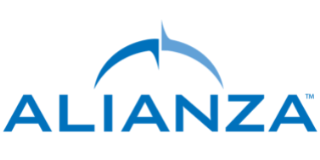
Traditional on-premises legacy TDM (time-division multiplex) networks are dying out, but choosing when to move to the cloud can be one of the most challenging and complex decisions a service provider can make. When faced with this harrowing task, most service providers hesitate due to fears that the services won’t be the same and customers may become upset or they may not be able to recover revenue.
Many providers have delayed their TDM replacement (IP network transformation) in an attempt to get every last bit of value out of their legacy hardware investments. Unfortunately, waiting to move to a more modern cloud solution will cost customers, reduce market share, and limit your growth in the long run. In 2019, communication service providers (CSPs) that embraced digital transformation grew at twice the speed of their competitors. By 2021, the gap had nearly tripled.
Stem Traditional Voice Death Spiral with TDM Replacement
There are numerous reasons for service providers to invest in TDM replacement, but that doesn’t mean all cloud hesitancy is gone. Long-standing resistance and fear of losing existing functionality have prevented some businesses from making the switch; however, maintaining legacy networks has already become so unsustainable for service providers that it is often described as the “traditional voice death spiral.”
With on-premises solutions, maintenance costs are fixed (or may even increase) while customer profitability and margins decrease as end users opt for mobile and cloud-based communication solutions. In addition, some TDM-based switching equipment is so outdated that suppliers no longer offer it, which increases the risk of service outages. Even the Federal Communications Commission (FCC) has been not-so-subtle in prompting providers to move to IP trunking and all-IP service delivery.
Top 4 Drivers for TDM Replacement
1. Aging Softswitches and Platforms
The greatest challenge telecom providers are facing is that their existing platforms are on the verge of end-of-life. For service providers that built their own switching network thirty or forty years ago, it is not only legacy time-division multiplexing like Nortel or Lucent switches that are aging out — even first-generation voice over internet protocol (VoIP) platforms are at or very near to end-of-life.
It has become increasingly challenging to get vendors to support those systems (if they are even still around), and new feature development and/or compliance with the latest regulatory requirements (e.g., Kari’s Law, RAY BAUM’s Act, and STIR/SHAKEN) is non-existent.
2. Eroding Margins and Subscriber Base
As subscriber bases erode with the attrition of landlines to mobile phones, service providers face a drop in revenue while their current cost structure remains fixed, which cuts into their margins. As this gap widens over time, providers need a way to keep their costs in line with revenue, so they can maintain or grow their margins. By moving to a cloud software as a service (SaaS) model, the OPEX pricing aligns with costs, and there is never any stranded capital.
3. Aging Workforce
Skilled personnel are retiring in greater numbers year over year, which means providers will have an increasingly challenging time locating replacements who have the knowledge needed to operate and manage legacy hardware that was developed decades ago. The cost to retain those employees or train someone new will be significant. In addition, there is no incentive for new individuals entering the workforce to learn how to program an obsolete 40-year-old softswitch.
4. Compliance and Regulation Requirements
Perhaps the business case for TDM replacement didn’t make sense for telco’s in the past; however now is the time to move to the cloud. It has become increasingly challenging to get vendors to support legacy systems and new feature development and/or compliance with the latest regulatory requirements (e.g., Kari’s Law, RAY BAUM’s Act, and STIR/SHAKEN) is non-existent.
Reasons to Leverage the Cloud for TDM Replacement
TDM replacements offer substantial benefits for service providers, ranging from consolidating the physical locations of IP equipment, significantly reducing space and power costs, real estate, maintenance labor, and third-party transport OPEX. There are even energy tax incentives for power-efficient technology.
Beyond economics, cloud-based platforms leverage next-gen technology to bring all the benefits of the cloud — such as web scalability, unrivaled service agility, and healthy, sustainable margins — to your network. The inherent flexibility of cloud communication platforms enables service providers to reduce costs, increase revenue, and launch new services more quickly and efficiently.
Reduce Costs
Effortless Scalability
Scale as your customers needs change, with less work. Our pay-as-you-go model ensures your margins grow as your customers grow.
Reduce Operational Effort
Streamline operations, automate key processes, and divert precious resources towards strategic ventures and growing your business.
Remote Deployment
A completely hands-off IT experience means there is no need to coordinate multi-location deployments, giving you back valuable time.
Grow Revenue
Increase Margins
Service providers can see an average gross margin increase of 54% by leveraging Alianza’s full-stack cloud communication solutions.
Expand Your Market
Target any range of SMB and enterprise customers with the infinite reach of cloud communications — without costly network expansions.
Fend Off Competitors
Protect your customer base from the competition. Enhance your network and expand your footprint by offering UC solutions.
Steps for Successful TDM Replacement
With a traditional cap-and-grow approach or softswitch replacement, adding new customers to a new platform is relatively easy, but migrating existing customers to a new platform is one the most expensive endeavors a CSP can take on. The cost in both time and money is doubled because each subscriber must be added to the new platform and deleted from the old one. There is also the prohibitive cost of maintaining both the old and new platforms while the migration is underway, putting both platforms below critical mass for most of the TDM replacement. The longer the legacy infrastructure must be kept in place, the higher the costs and lower the margin — not to mention the risk of losing subscribers along the way.
However, by having a partner like Alianza — who has successfully migrated providers from virtually every switching platform on the planet — we know how to mitigate risk, TDM replacement, and move subscribers over safely. We have migrated hundreds of thousands of subscribers for our customers to our cloud communications platform, including bulk migrations as large as 10,000 subscribers in a single day.
That is how you get started. Work with an established cloud communications provider whose expertise you can rely on to deliver a fantastic TDM replacement experience.
Alianza Makes TDM Replacement Easy
An inexperienced or new solution provider won’t have the depth of knowledge needed to understand what can go wrong during TDM replacements or how to avoid it. However, Alianza has a professional project management team that manages the entire TDM replacement and migration for service providers including integrations, device testing, process, training, and more.
At Alianza, we help service providers navigate the entire TDM replacement process and stand with them shoulder-to-shoulder (virtually nowadays) to deliver that safe migration.
We describe the transition to the cloud as the last migration a service provider will ever have to make.





![Copy of [Alianza Hubspot] Blog Images - Small (90) TDM replacement](https://www.alianza.com/wp-content/uploads/2022/05/Copy-of-Alianza-Hubspot-Blog-Images-Small-90.png)
